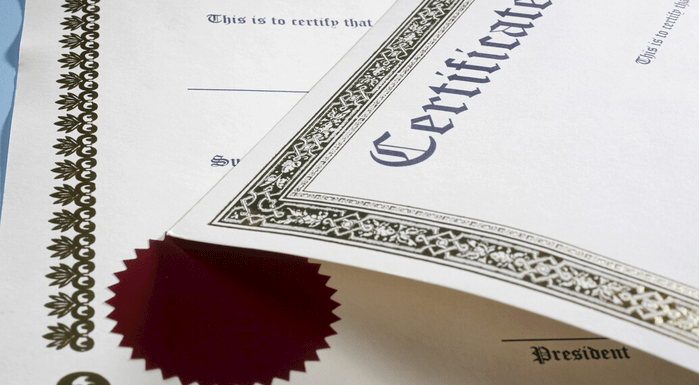Mostyn Llewellyn Davies was, according to his military record, a man who inspired confidence – a man with his own easy confidence, charm and an agile mind, but also a man of determination.
A qualified chartered accountant before the war, Davies quickly became a key resource within the Civil Service’s war efforts. Labelled as “‘brilliant”’ at a role where he could have remained working in London, Davies made the extraordinary decision to join the Special Operations Executive and become an agent in the field. He would spend 18 months in postings in Africa, the US and South America before his final mission in the Balkans.
Early life
Mostyn Llewellyn Davies was born in London in 1910, the only son of Llewellyn Sidney Davies, a barrister, and his Danish mother Clara. Like many chartered accountants of this era, Davies enjoyed a privileged upbringing, growing up at the family home in Regent’s Park.
Davies was educated at Charterhouse School and then at Magdalen College Oxford, where he received an Honours BA degree in History. On leaving university he became an articled clerk to the senior partner at Tansley Witt & Co in Chancery Lane, London. He took his final accountancy exams in November 1934 and was admitted to ICAEW in 1935. Later that year Davies left Tansley Witt & Co and became deputy accountant at Trinity House, the charity dedicated to safeguarding shipping and seafarers via the operation of lighthouses in British waters, and stayed until May 1939.
From the civil service to special operations
In June 1939, with the threat of war in Europe intensifying, Davies left Trinity House and was appointed to the position of Private Secretary to the Parliamentary Secretary in the Ministry of Supply.
In 1940 he moved to the Ministry of Aircraft Production in the same role and in 1941 to the Ministry of War Transport. All of these departments were at the beating heart of Great Britain’s war machine, and Davies was regarded as one of the “most brilliant young men in the Civil Service”.
As he was more than 30 years of age and a chartered accountant, Davies was in a reserved occupation and not required to join the armed forces. However, he did not take this route.
The Special Operations Executive (SOE) had been created in total secrecy in July 1940, with a mission to foster clandestine resistance and “ungentlemanly warfare” in countries occupied by Germany and its allies. Davies applied to join SOE in October 1941, but, because his work in central government was so highly valued, he was not released from the Ministry of Transport for four months.
Davies joined SOE as reg no 230270 and signed the Official Secrets Act in February 1942. He then successfully completed the intensive physical, weapons and intelligence training required of all SOE agents. His final training report reveals how highly his abilities and attitude were regarded: “His somewhat languid manner and slow speech conceal a very lively brain. He is well informed and shows both imagination and balanced judgement. He is a man of enterprise and determination who could be relied upon to tackle any job deliberately and thoroughly: nor is he afraid of hard work or responsibility. He has a pleasant personality and an easy, confident manner. A man who inspires confidence in other people.”
Davies was well travelled before the war. According to his SOE application, he had visited Canada, Argentina, France, Spain, Norway, Sweden, Denmark, Hungary, Switzerland, Italy, Germany and Brazil – a travel itinerary that would be no mean feat today.
The form also identifies that he had: “…specialist knowledge of finance and accounts and the machinery of government in this country”. Davies also claimed to have a working knowledge of French and Spanish. These attributes would have made him attractive to the SOE in its mission.

In the field: Lagos, New York, Cairo
Davies’s first SOE posting was to Lagos in West Africa in April 1942, on an annual salary of £450 plus £150 living expenses. Here he met Brenda Margaret Woodbridge – a fellow member of the SOE – and, according to her correspondence in the Imperial War Museum, “it was love at first sight”. After a whirlwind romance, they married on 6 August 1942.
Almost immediately, Davies was posted to SOE’s office in New York for seven months (to assist with a security scheme for South America). Here he came into contact with another of SOE’s chartered accountants, Major Henry Benson, a partner at Cooper Brothers & Co, who in later life became President of ICAEW. Davies then spent a further two months in South America, where, according to his SOE report: “He conducted negotiations with charm and tact but also great tenacity.”
Final mission
In July 1943, Davies was posted to SOE’s Balkans section, Force 133, based in Cairo, Egypt, and began preparing for what became his final mission, Operation Mulligatawny.
Davies, by now a major, along with two other SOE agents, was parachuted into Albania in September 1943, with the aim of reaching Bulgaria, which had allied itself to the German cause in 1940. At this time the Balkans was both a political and military hotbed, and so Davies’s charm, tact and diplomacy skills would have been useful.
Once the men reached Bulgaria, they teamed up with local partisans and conducted numerous acts of sabotage and resistance, making themselves targets of retribution from German-backed forces.
Davies’s SOE file states that on 25 March 1944 Mostyn Davies and his team were ambushed by armed gunmen at Novo Selo in the Crna Trava area on the Bulgaria-Romanian border. Tragically, Davies and his wireless operator Sergeant-Major Watts were killed.
Given the remoteness of the location, and the political confusion in Bulgaria after the war had ended, it took until October 1945 for the deaths to be confirmed. Initially the men were posted as missing in action and assumed to be prisoners of war, leaving their families – including Davies’s wife of less than two years – in distressing ignorance of their fate and, no doubt, agonising hope.

Recognised and remembered
Davies was awarded a Distinguished Service Order (DSO) on 13 May 1944 by General Paget, Commander-in-Chief Middle East. The DSO is a gallantry award for “outstanding leadership and command during enemy operations, in the presence of the enemy”. It is ranked second in UK military honours, only below the Victoria Cross. Davies’s wife received his DSO from King George VI on 29 October 1946.
Davies and Watts were originally buried as “unknown British Soldiers” in the Commonwealth War Graves Commission cemetery in Belgrade, Serbia. However, in March 1954 they were formally identified and reburied together.
Reflecting on Davies’s story, ICAEW President Derek Blair, says: “We could guess that Mostyn would have been dissatisfied with the prospect of ‘flying a desk’ for the duration of the war. Although he was in a relatively safe, reserved occupation, he chose to put himself in harm’s way by applying to join a clandestine unit. He must have known that the nature of the work would be particularly dangerous.
“Given Mostyn’s obvious talents, it is tempting to speculate what he might have gone on to achieve if his life and career had not been cut short. We will never know, but I am sure that Mostyn’s parents, widow Brenda and his other family members and friends were as proud of him as we are.”
There is a family memorial for Davies in St Ethelbert’s Church, Herringswell, Suffolk, with an epitaph fitting, not only for Davies, but all those that made the ultimate sacrifice during the Second World War: “Life to him was not given to be safeguarded but to be lived.”
About the author
Ian Piper FCPFA, PhD student, University of Portsmouth, has written this article based on his research into the activities of ICAEW members during the Second World War. His latest research paper is ‘Jobs for the boys: A Prosopographical study of Chartered Accountants who served with The Special Operations Executive (SOE) 1940-46’, Accounting History.
Accountants in WW2



